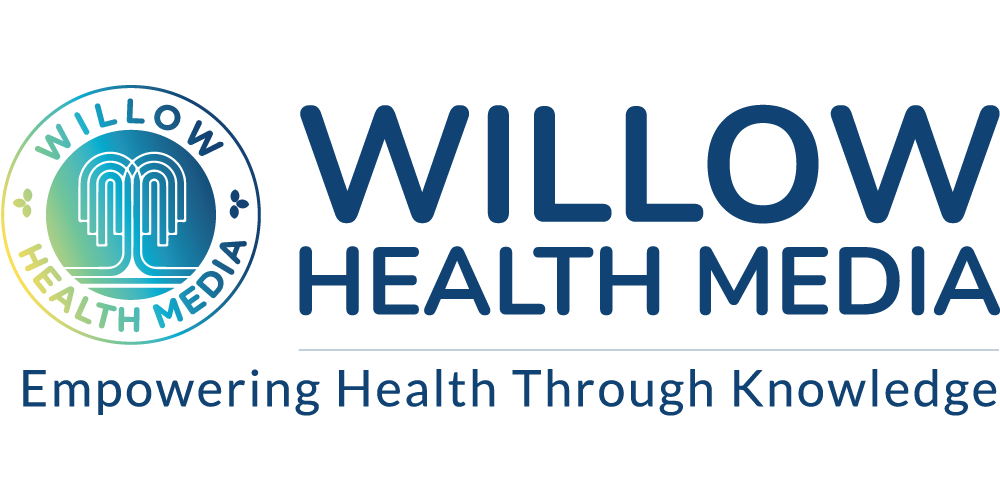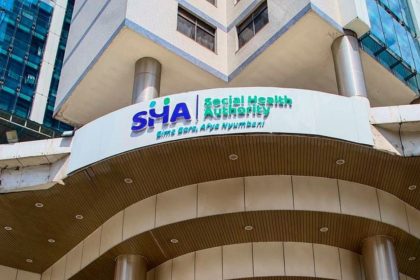Every hospital is mandated to provide emergency medical care even without deposit as the Emergency Chronic and Critical Illness Fund will pay for them
It will be a very disruptive system, albeit in a good way- Harry Kimtai, PS, Medical Services
By Judah Chacha
Entry of the new Social Health Authority to replace Kenya’s defunct National Health Insurance Fund is expected to create massive disruptions in the healthcare system, even as the government moves forward to implement its Universal Health Coverage agenda.
Speaking to journalists at a recent event, Harry Kimtai, the Principal Secretary in the State Department for Medical Services, described the incoming Social Health Authority (SHA) as “A very disruptive system, albeit in a good way”.
The most significant disruption will be the collapse of 96 medical schemes in the National Health Insurance Fund (NHIF), which, although beneficial to Kenyans, became breeding grounds for fraud, mismanagement, and inequality. An impact assessment study presented to the NHIF board in 2020 estimated NHIF medical fraud risk to be 29.3 percent, partly due to the unsustainable number of medical schemes.
Among these is the National Health Scheme, dubbed UHC Supa Cover whose membership included paid-up employed and self-employed Kenyans.
Also set to collapse is the Enhanced Scheme, which covered civil servants, the National Police and Prison Service, county government staff, parastatals, and pension schemes for retired public officers. The scheme was designed to go beyond NHIF’s basic cover, offering more comprehensive services, including inpatient, outpatient, dental, optical, and maternity care.
The Enhanced Scheme has been flagged as one of the most corrupt schemes under NHIF, which opened pathways for corruption through fraudulent medical claims.
According to SHA Chairperson Dr Abdi Mohamed, NHIF came up with the different schemes following negotiations with the government. For civil servants, the government took their existing medical allowances, added extra funds, and handed the total to NHIF to design a more comprehensive health cover. This negotiation process allowed NHIF to create benefit packages tailored specifically to each group.
“The covers for schemes were more like how the private insurance operates where there are limits rather than specific benefits and packages,” explains Dr Abdi.
According to a report by the Departmental Committee on Health, despite collecting billions in premiums, the schemes quickly became involved in fraud and financial mismanagement. By the end of the 2022/2023 financial year, there were 73 active enhanced schemes, covering 3.8 million members and collecting Sh18.25 billion annually.
Yet, despite the financial resources allocated, the system’s pay-outs often exceeded 100 percent – an indicator of inflated claims and fraudulent activities. The National Police Service scheme, for instance, saw a pay-out ratio of 139 percent, suggesting that the funds were being misused at an unsustainable rate.
Another controversial scheme that fell under scrutiny for mismanagement and fraud is Edu Afya. Launched in 2018, Edu Afya was designed to cover free health care services for 3.5 million public secondary school students, with an annual premium of Sh4 billion. The plan covered routine health care services for students aged between 14 and 18 years of age.
“If you look at Edu Afya, it was covering children who were in public secondary schools. You will find that parents of those children also had insurance. It was also discriminatory because it was covering only public secondary schools,” says Dr Abdi.
On the surface, this seemed like a positive initiative. However, despite this demographic of students being one that typically does not require frequent medical care, Edu Afya’s pay-out ratio ranged between 58 percent and 80 percent – numbers that raised eyebrows. These percentages suggested an unusually high usage rate, hinting at inflated claims or unnecessary medical visits.
“They are supposed to be the heathiest population because at that age between 14 and 18, you are less likely to fall sick. Some facilities were colluding with teachers and head teachers. Some of the stories we have heard are whereby a teacher would bring an entire bus full of students to a facility and register them, and that facility would submit medical claims for 150 students at once and NHIF would pay,” says Dr Abdi.
“The risk of fraud was higher in the enhanced schemes such as Edu Afya as proved by the high number of reported fraud cases by service providers under investigation. Services in this scheme were mostly offered by Level 2 facilities, most of them lacking the infrastructure for biometrics,” reads the report by the Departmental Committee on Health.
Another loophole for fraud was the Linda Mama scheme. Introduced in 2013 as a programme offering free maternity services to vulnerable pregnant women, Linda Mama had noble goals. It aimed to reduce maternal and infant mortality rates, eventually enrolling 1.1 million women annually, with Sh4.1 billion set aside for the programme.
“So, if they (NHIF) were paying for 850,000 deliveries and the estimation of deliveries in the country is 1.1 to 1.2 million per year, what does that tell you? That literally they were covering everyone who delivers that year,” says Dr Abdi.
However, as audit reports submitted before the Departmental Committee on Health later revealed, Linda Mama also became an avenue for widespread fraud. Hospitals overbilled for services that were never delivered, while others registered ghost patients to claim higher pay-outs.
“A woman would have an NHIF cover and the facility would claim both from NHIF and Linda Mama. The other thing that made it easy to defraud the system was that a woman did not need to register her biometrics. So, the assumption was a pregnant woman showed up and had no cover. All the hospital needed to do was send the message that they had done a delivery. There was no way to verify or any database to look at. There was duplication and that made it much easier to steal,” says Dr Abdi.
The pay-out ratio for Linda Mama reached 162 percent in some financial years, highlighting the extent of financial leakage. What was intended as a lifeline for vulnerable women became an avenue for unscrupulous actors to exploit the system.
To seal the loopholes for theft through fraudulent and exaggerated claims that were in NHIF, the new authority has set up an enhanced digital system where every member will be registered through biometrics, which are a 10-fingerprint system, or facial recognition that will be introduced later.
“For SHA, you have to be registered and use biometrics to get any services and the biometrics come from the National Reference Bureau which is our single source of truth,” says Dr Abdi.
While enhanced schemes such as Edu Afya and Linda Mama will still continue under the new SHA model, they will no longer exist as independent programmes. The two will operate under the digital biometric system, and accessed through SHA’s Primary Healthcare Fund and Social Health Insurance Fund (SHIF).
This shift is meant to eliminate the fragmentation that led to widespread fraud, and to ensure that all Kenyans can access health care services under a more transparent and accountable system.
For pregnant women, SHA promises comprehensive maternity care covering labour, delivery – whether normal, assisted, or caesarean – and postnatal care. Women will also receive medications and immunizations for their new-borns.
“Linda Mama scheme was paying for an event, which is delivery. After delivery, you are on your own. Under the new model, we will pay a premium for needy mothers, which now covers not only the event, but also the whole family. It covers the mother’s children, spouse and herself even after she has left the hospital,” says Dr Abdi.
All pupils and students from pre-primary school to secondary school will automatically receive cover under their parent or guardian’s SHA health plan. However, once they turn 18 years, they must register as individual contributors within 90 days to continue receiving benefits.
The SHA healthcare benefits package has listed several comprehensive benefits, which were not available in NHIF. Among these is overseas treatment, where SHA will empanel and contract foreign healthcare providers and negotiate treatment costs to enhance affordability.
“This means that members accessing care overseas will be covered more comprehensively,” says Dr Daniel Mwai, Advisor to the Presidential Economic Transformation Team on Health.
Previously, NHIF only reimbursed a patient Sh500,000 for overseas treatment, which was subject to approval.
As well, SHA will provide an expanded Oncology care package where patients will receive diagnosis, screening and treatment for cancer, whereas NHIF did not cover cancer diagnosis. Surgical procedures, which Kenyans seek abroad, will also be available in Kenya, including kidney transplants, knee and hip replacement surgery among others.
Dr Mwai says this will end medical tourism, which is thriving especially in India. “There will be no need to fly to India for knee replacement surgery when the procedure is available in Kenya and fully covered by SHA,” he says.
It is also likely to drive out private medical insurance companies, which complement State-provided insurance cover.
“The Emergency Chronic and Critical Illness Fund will pay for accidents and sudden medical emergencies, meaning every hospital facility will be mandated to provide emergency medical care even without a deposit. After that, the patient will automatically get care through the Social Health Insurance Fund,” says Dr Mwai.
Health PS Harry Kimtai says the new model will also disrupt social norms such as medical harambees, as “There will no longer be a need to create WhatsApp groups for contributions for patients to travel to India or other countries to get treatment. The treatment will be available locally and paid for by the government.”
While SHA represents a major shift in Kenya’s healthcare system, there are still lingering questions on whether it will be able to deliver on its promises, as funding remains a key issue threatening its eventual success.





















